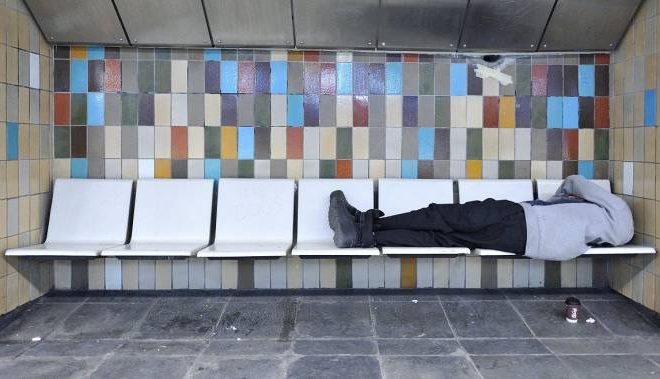More than half of Quebec’s homeless population lives in Montreal

There are about 5,789 people visibly living on the streets in Quebec — about 76 people for every 100,000 residents, according to results of a headcount that took place last spring in the province.
In Montreal alone, the number stood at 3,149 — a slight increase compared to the last count at 3,016 people.
“Visible” homelessness refers to people who went to emergency shelters, transition homes or spent the night outside during the official count on April 24, 2018.
The goal is to help the province and its cities tailor social programs for some of the most vulnerable populations.
IcountMTL, the organizer says more information is needed as these groups are often overlooked.
WATCH BELOW: How big is Montreal’s homeless population?
“For the first time, this exercise has made it possible to count those living in homelessness and to profile them from several angles,” said Quebec Health Minister Danielle McCann.
“This will help us better respond to people in need.”
Forty-one per cent of respondents said they had been homeless for the entire year prior, compared to 15 per cent who said they had been living on the streets for less than a month.
Thirty-four per cent of said it had been over 10 years since they first experienced homelessness.
WATCH BELOW: Despite bitter cold, homeless people found sleeping outdoors by Lachine Canal

“Large cities face a specific challenge when it comes to homelessness and ours is no exception,” said Chantal Rouleau, provincial minister responsible for Montreal.
“This report has shown us that a little more than half the people living on the streets in Quebec are in Montreal.”
The report, in collaboration with the City of Montreal, aims to paint a picture of the plight of homelessness in the city.
WATCH BELOW: How an emergency shelter is helping Montreal’s homeless come in from the cold

Officials note that the numbers recorded are proportionately smaller than in many other Canadian provinces, as well as other countries.
However, authorities admitted women were underrepresented in the count as the context of their homelessness can be vastly unique.
In contrast, the number of Inuit and First Nations people living in homelessness was high, relative to their visibility in the population.
The last count was done in 2015.








